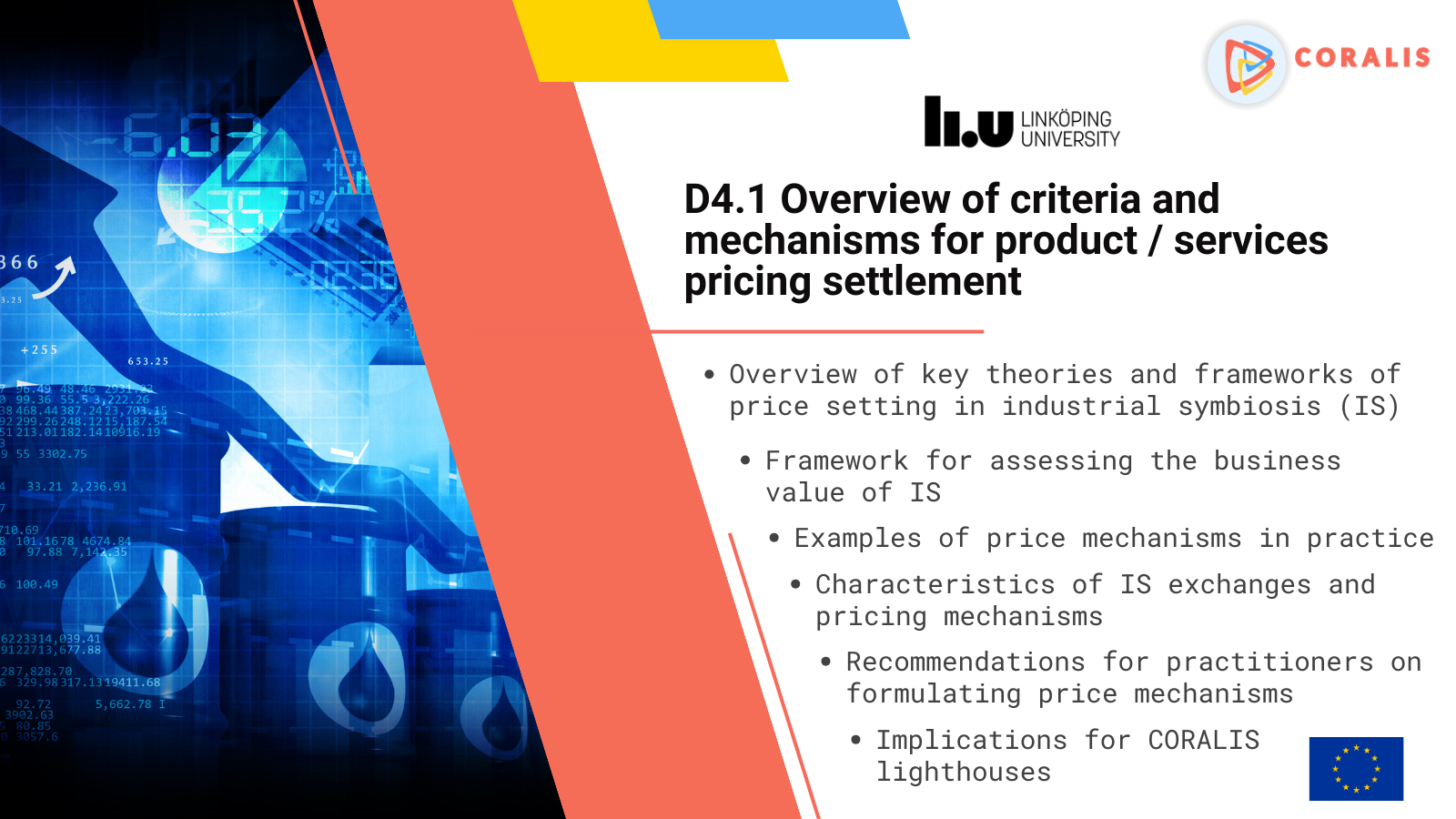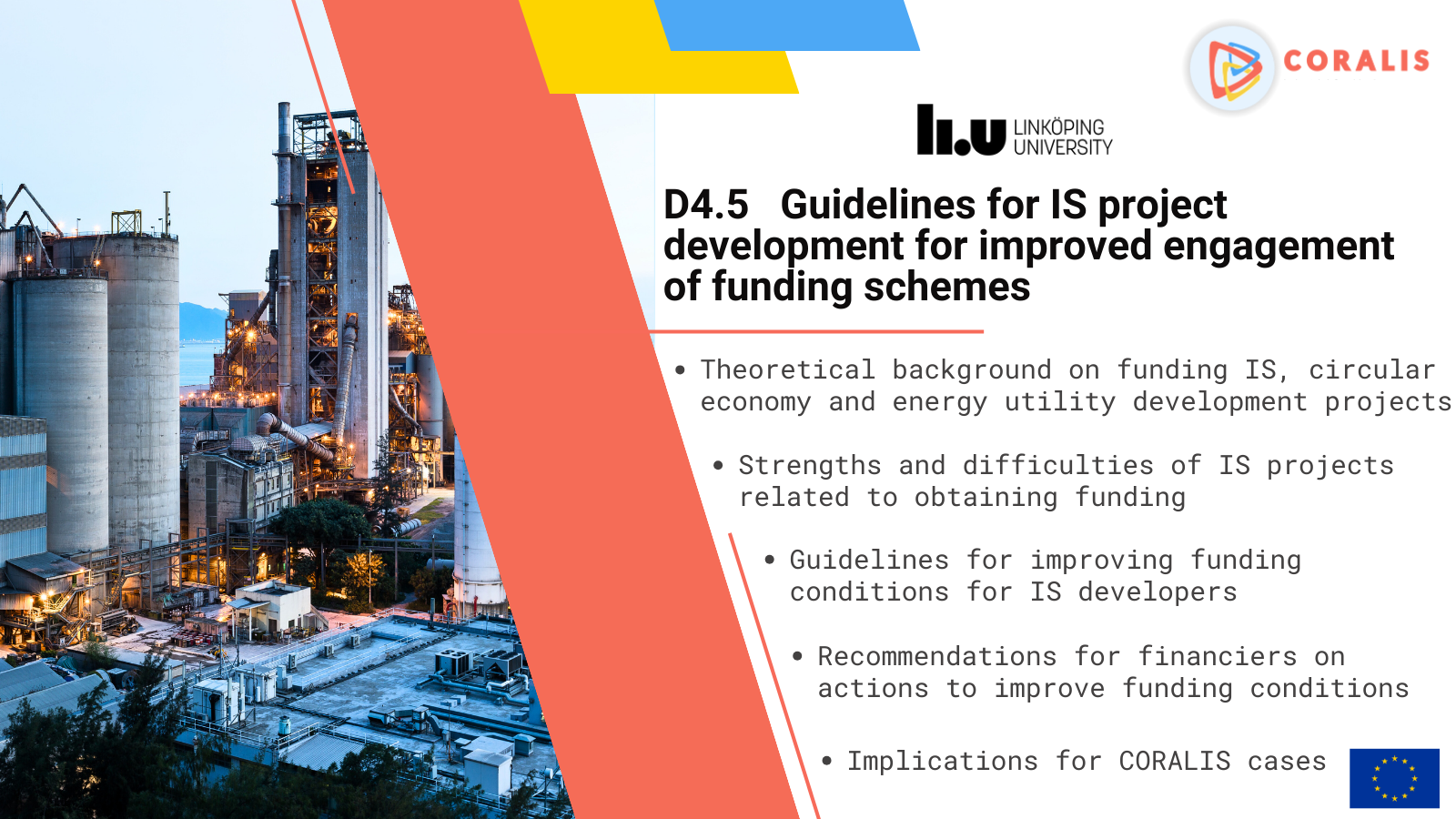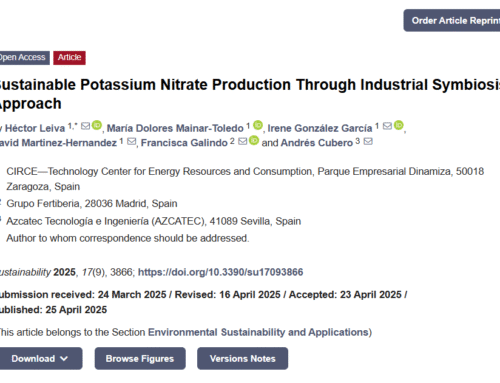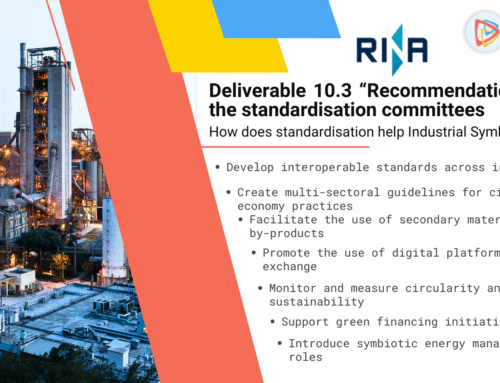The development and adoption of effective and efficient managerial dynamics, business models and governance mechanisms is essential in supporting successful emergence and stable and long-term operation of symbiotic partnerships. In this context, the aim of CORALIS WP4, led by LINKÖPING UNIVERSITY (LiU), was to provide IS practitioners with guidance and tools to set up and facilitate agreements of long-term commitments creating sustainable value.
Specific objectives of WP4 have been:
- To promote techniques enabling transparent value assessment and fair price setting for exchanged products and services
Deliverable 4.1: Overview of criteria and mechanisms for product/services pricing settlement, by LiU, compiles the major insights yielded on this front. The report delves into the pricing mechanisms of Industrial Symbiosis (IS) relationships, showcasing diverse approaches tailored to specific contexts. It emphasizes transparency, dynamism, fairness, and creativity as crucial elements in successful pricing agreements, while also offering a comprehensive business value assessment framework and recommendations for managing pricing agreements. The report highlights the importance of a value-based approach, especially for innovative IS solutions, and suggests integrating findings into CORALIS initiatives to enhance pricing agreements and facilitate IS development. The outcomes of this report hold potential to benefit not only CORALIS partners but also practitioners and researchers in the broader domain of IS relationships and pricing agreements.
- To investigate and promote models for investment, ownership and responsibility sharing supportive of symbiotic transactions
Deliverable 4.2: Reference documents, good practices, and templates to sustain legal environments for industrial symbiosis cases by LiU, presents the major insights yielded on this front. The report summarizes the outcomes of the CORALIS Task 4.2, which focused on providing guidance for successful emergence and development of IS partnerships through supportive business agreements. Combining theoretical insights with empirical data from 70 IS cases, the report presents ten case typologies as well as a framework for assessing inter-organizational engagement levels. The report also identifies key points for effective IS relationship management and offers generic contractual templates for IS partnerships. The findings and insights of the study are relevant for the companies and facilitators within and outside CORALIS consortium. As the study offers new knowledge on the governance of IS relationships, an area where scientific research is scarce, it is also valuable for researchers.
- Analyse information sharing within IS networks and its impact on trust, efficiency and commercial incentives, as well as explore approaches for the utilization of ICT platforms for comprehensive information sharing
Deliverable 4.3: Overview of data exchange channels and their implementation by LiU, presents the findings concerning information sharing within IS networks, drawn from lighthouse and follower networks in CORALIS, with data gathered through interviews and questionnaires. Key outcomes include an analysis of different information sharing structures and channels and a guide for their utilization, suggestions for enhancing information sharing based on identified needs, and valuable lessons learned for both lighthouses and followers. The report highlights the significant impact of information sharing on trust, collaboration, efficiency, and knowledge enhancement within IS networks, while noting that commercial incentives influence information sharing structures, with each network requiring a unique structure, governance style, and responsibility division tailored to its constellation and needs. The report also highlights that specific information needs arise across technical, practical, and collaborative aspects, with different phases of IS development demanding distinct information sharing strategies. It proposes that common logic is best to guide the use of information sharing channels, suggesting adaptability based on situational requirements. The report also refers to the emerging ICT platforms as potential facilitators for comprehensive and inclusive information sharing among network actors.
- To develop guidelines that will assist IS practitioners to prevent and confront with risk investments.
Deliverable 4.5: Guidelines for IS project development for improved engagement of funding schemes by LiU presents the findings from Task 4.4, focusing on financing IS developments, that are created by combining theoretical insights and empirical data from interviews with IS developers and funding body representatives. Key conclusions of the report include similarities and differences in financing IS projects compared to non-IS projects, with commercial incentives and project characteristics influencing funding decisions. The findings highlight the vital role of different funding sources, such as public grant programs and retained earnings, based on project stages, risks, and investment sizes. The report’s recommendations emphasize structured risk mitigation and effective communication with funders, aligning with evolving EU taxonomy for sustainable activities. To improve funding conditions, the report also proposes a three-step process and guidelines for project developers and offers suggestions for funding bodies. Overall, the insights from the report are valuable for companies, facilitators and researchers involved in IS project financing, addressing a notable gap in academic and practical publications on this topic.
WP4 also aims to assess and set up communication channels and platforms supporting efficient and secure data and information exchange among the IS involved partners, which is why a relevant repository is under construction and testing by ICCS and will be made available soon over the next couple of months to facilitate information exchange and collaboration between the consortium partners at first but among IS partners and entities in general as well at a later stage.










